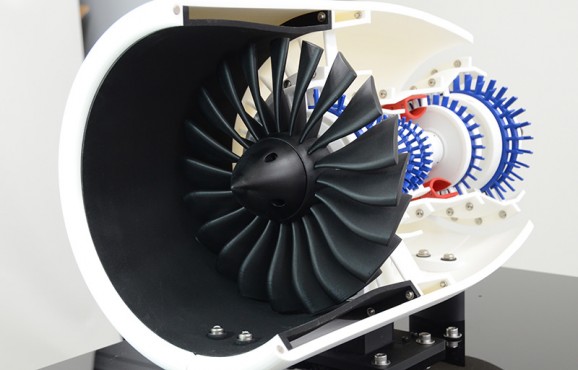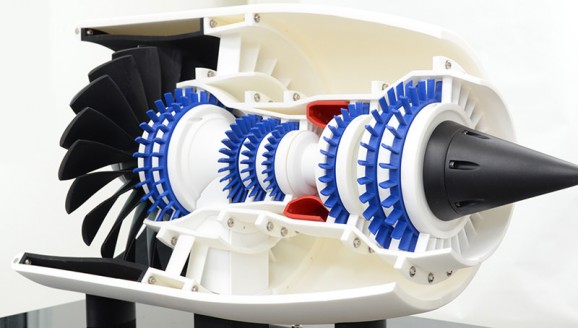Japanese Company 3D Prints A Jet Engine
This article is more than 2 years old
 3D printing keeps getting better—and bigger. Among a zillion other things, we’ve seen 3D-printed cars and motorcycles, and now we’ve got a working 3D-printed jet engine.
3D printing keeps getting better—and bigger. Among a zillion other things, we’ve seen 3D-printed cars and motorcycles, and now we’ve got a working 3D-printed jet engine.
General Electric has been 3D printing jet engine parts for a while now, such as titanium turbine blades and fuel nozzles, some of which could be used for new Boeing engines. The company even put all the files online at Thingiverse so people can print the parts at home and, at least theoretically, build their own jet engines. Which, y’know, is super useful if you don’t have a jet. Maybe it would work in a vacuum? Suffice it to say, GE has been leading the back on 3D-printed jet engine stuff for a while, but now they’ve got stiff competition.
A Japanese company called id.arts was hired by IHI Corporation, a manufacturer of equipment for ships, bridges, engines, and cars, to develop a two-axis rotary jet engine. But rather than developing a new engine to be manufactured and distributed widely, what IHI wanted was a working, 3D-printed model. It seems as though they’re trying to ascertain whether they’re interested in 3D printing heavy machine parts, and trying to figure out of they are reliable and safe, more cost effective, and environmentally friendly.
 Id.arts rose to the task. These folks drew up the design in a day. I couldn’t design a lunchbox in a day. And then another day to model. And a few days later they said, let there be light! Oh, wait… I skipped a part. There was a week of 3D-printing in there, for which the company used nylon polyamide and selective laser sintering to create the bulk of the engine’s body. They used ABS plastic to print the rotating turbine, high-pressure shaft, high-pressure compressor, combustion chamber, and a few other important pieces. Then they kind of cheated, because they bought a few parts from another manufacturer, such as a pulley, a bearing, and a low-pressure shaft. All told, the engine was built from 105 3D-printed parts, 30 additional parts, and 440 auxiliary parts (screws, bolts, etc).
Id.arts rose to the task. These folks drew up the design in a day. I couldn’t design a lunchbox in a day. And then another day to model. And a few days later they said, let there be light! Oh, wait… I skipped a part. There was a week of 3D-printing in there, for which the company used nylon polyamide and selective laser sintering to create the bulk of the engine’s body. They used ABS plastic to print the rotating turbine, high-pressure shaft, high-pressure compressor, combustion chamber, and a few other important pieces. Then they kind of cheated, because they bought a few parts from another manufacturer, such as a pulley, a bearing, and a low-pressure shaft. All told, the engine was built from 105 3D-printed parts, 30 additional parts, and 440 auxiliary parts (screws, bolts, etc).
At the end of the day, this was a rousing success. The model, which took about two weeks from conception to realization, worked. While there are no current plans to implement them, I bet you a jet engine that there will be in the near future.












